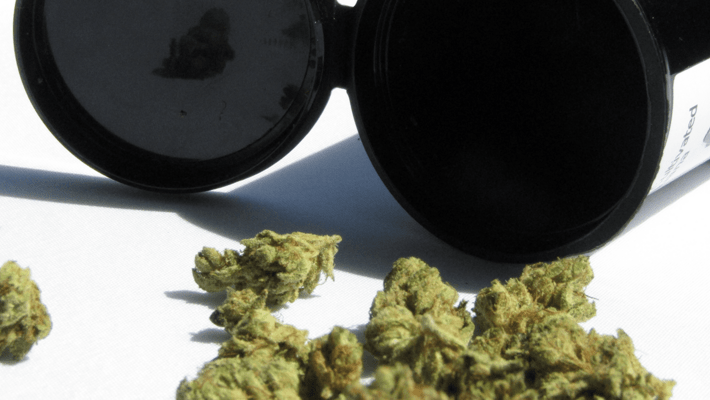
What Does TAC Mean in Cannabis?
Published on 11/18/21
As the legal and medical cannabis industry has grown and evolved from a black market illegal drug trade to a multi-billion dollar global business venture, the idea of cannabis as medicine has always been a popular one.
While the scientific links between cannabis and the treatment of painful conditions like arthritis, MS, cancer, Parkinson's, IBS, and Crohn's Disease have long been established, many still struggle to wrap their head around the idea of cannabis being used in a medically relevant way.
As the medical industry has grown, however, we've seen things get more and more professional as they go. Cannabis products now have detailed dosage instructions on the product labels, they list ingredients, terpene profiles, and even break down how much THC, CBD, and other various chemical compounds are in the product itself. That's where TAC comes in.
This article is going to break down exactly what that TAC acronym stands for and what it means for consumers, whether or not TAC is actually all that important to the overall cannabis experience, and how it can help consumers make better decisions with the cannabis they buy. Let's get right into it!
So What Exactly is TAC?
 Unsplash
UnsplashSo what is TAC? Don't worry, we've got your back here. No need to pull up your favorite search engine and punch in "TAC meaning" or anything like that.
Simply put, total active cannabinoids (or TAC for short) is a measurement of the total amount of active cannabinoids at the time of the lab test in the cannabis sample being tested. Think of that total active cannabinoids percentage like the nutritional label you see on food products. The TAC when it comes to cannabis products is there to tell you what's in the weed and how much of it is there.
Decoding the Cannabis Product Label
So if TAC doesn't tell the full story of whether cannabis products are right for the consumers or not, what will tell that story fully? Well, as we mentioned before, the cannabis industry has gotten much better over the years at informing customers what they're buying via the products' labels.
For example, most medical cannabis products available for consumers today come with a detailed breakdown of how much THC, CBD, CBN, and a laundry list of other naturally occurring cannabinoids that are found in that particular product.
So what exactly are cannabinoids? Thankfully, we here at Where's Weed are around to provide a cannabinoids definition for all those on the hunt for one!
Here's a quick list of cannabinoids and how they impact the users generally:
THC (Tetrahydrocannabinol): The most abundant and widely known cannabinoid in marijuana, THC is the cannabinoid responsible for the main psychoactive effects people experience when using cannabis. The compound is a mild analgesic and cellular research has shown the compound has antioxidant activity. THC has been shown to be effective at easing severe pains.
CBD (Cannabidiol): CBD is a non-psychoactive cannabinoid that is believed to reduce the psychoactive effects of THC. CBD has been heavily studied and has been linked to the reduction of pain, anxiety, inflammation all throughout the body, and other medical uses.
CBN (Cannabinol): A psychoactive cannabinoid that comes about from the degradation of THC, there is usually very little CBN in a fresh plant. CBN potentiates the effects of THC. The degradation of THC, into CBN, is often described as creating a "couch-lock" effect.
Total Active Cannabinoids vs. Total Aerobic Count
 Unsplash
UnsplashIt's important to note that along with that TAC acronym standing for total active cannabinoids, it could also mean total aerobic count. While the two share the same letter combination for short, they are two very different things.
Total Aerobic Count is a way of figuring out if your cannabis is produced and packaged in a sanitary and healthy way for the consumer. As a baseline rule, the results of a Total Aerobic Count (TAC) test are an indication of bacterial contamination on a cannabis sample.
The following states require some form of TAC testing on their cannabis products:
- Canada
- Colorado
- Connecticut
- Florida
- Hawaii
- Illinois
- Iowa
- Louisiana
- Maine
- Maryland
- Massachusetts
- Minnesota
- Nevada
- New Hampshire
- New Mexico
- North Dakota
- Ohio
- Pennsylvania
- Rhode Island
- Utah
It's important to note, however, that TAC is far from perfect. For example, TAC tests have not been perfected and cannot tell the difference between benign, pathogenic, and beneficial bacteria. As a result, using testing alone cannot indicate if a grower uses poor safety or sanitary methods. That means that a low TAC result doesn't always mean that there are no pathogens or bacteria in the cannabis sample. On the other hand, a high TAC score doesn't indicate that the cannabis sample contains harmful bacteria.
As a general rule, TAC should be used more as a guiding hand than an end-all yes or no as to whether a product is safe and good for a particular consumer to use or not. There are plenty of other factors that play into that choice as well.
The Bottom Line
Figuring out exactly what's in the cannabis you're buying and what those compounds do can be a struggle. It can all seem overwhelming and daunting if you don't put the proper time and research into it to get things sorted out. Thankfully, we here at Where's Weed have your back.
At the end of the day, as long as you're getting the right combination of cannabinoids into your system to treat your various symptoms and give you the results you're looking for, not much else matters. That's why you'll want to check for that TAC on labels going forward, read that cannabinoid profile on the package, and figure out which products are best for you in the long run!&
